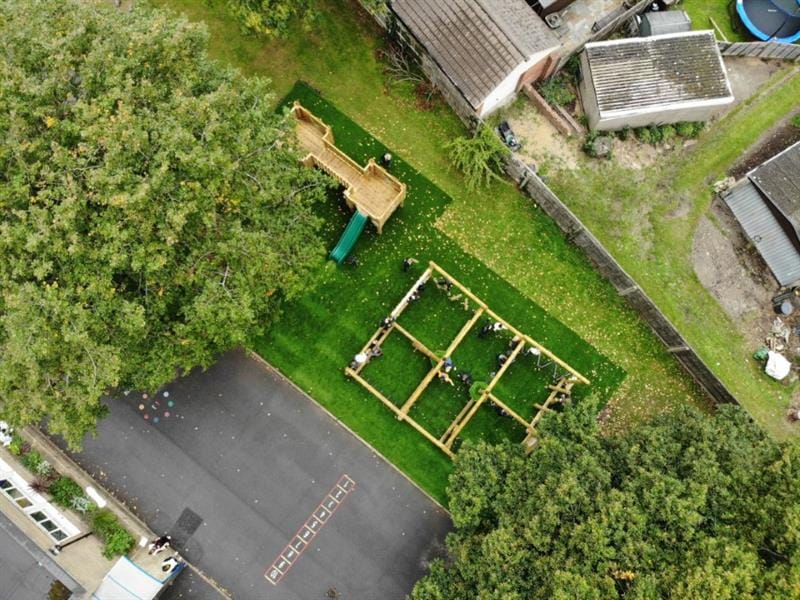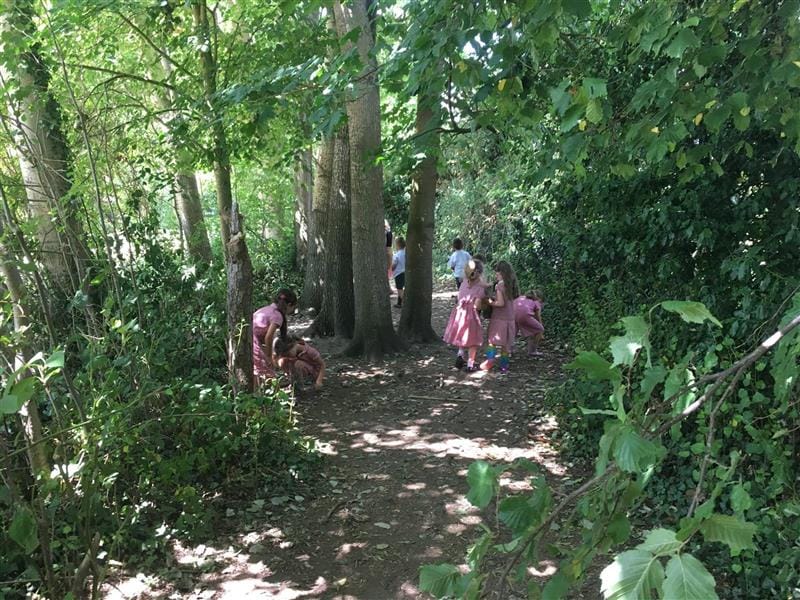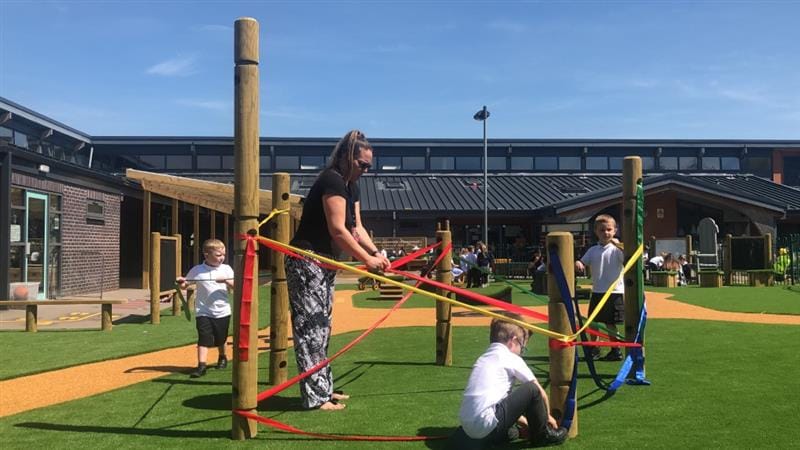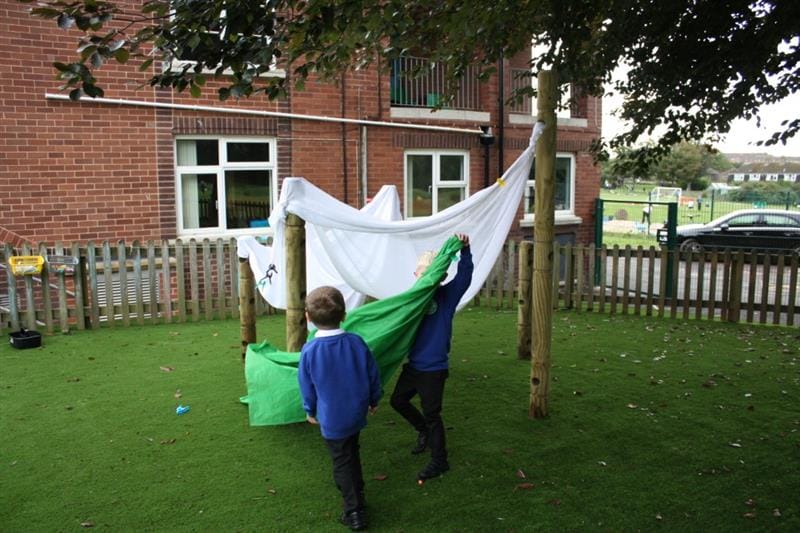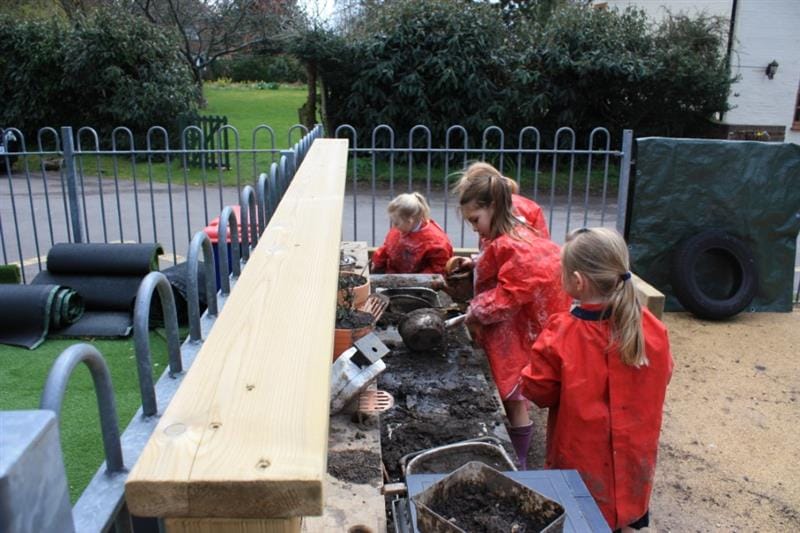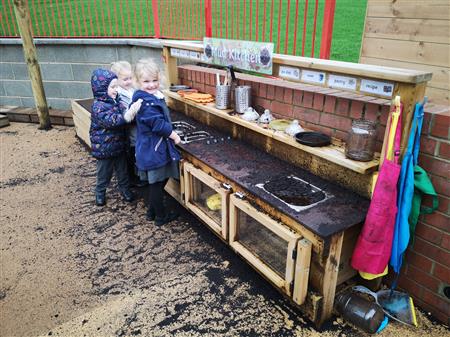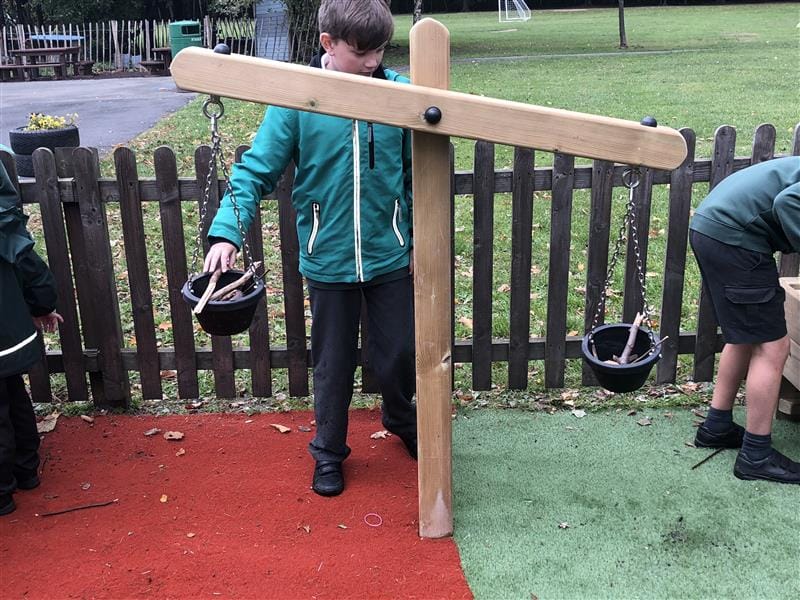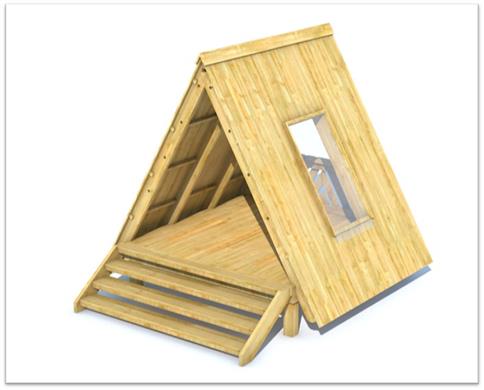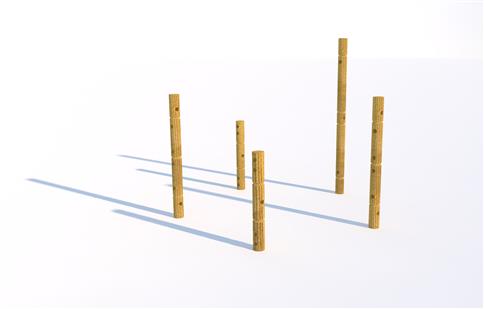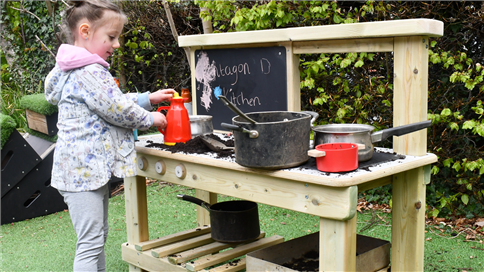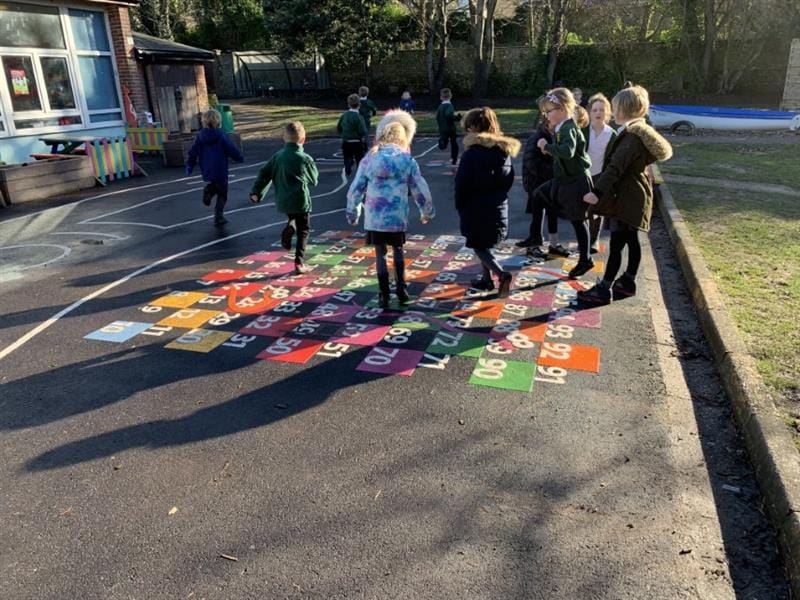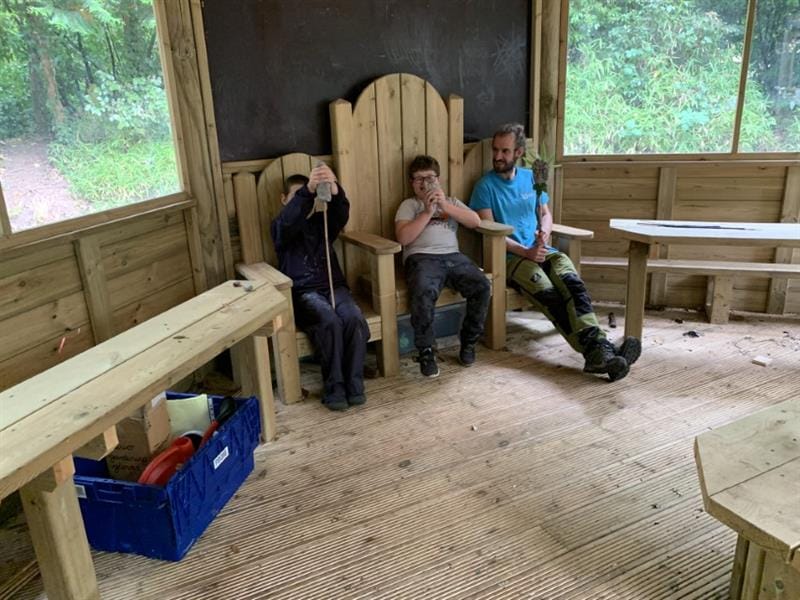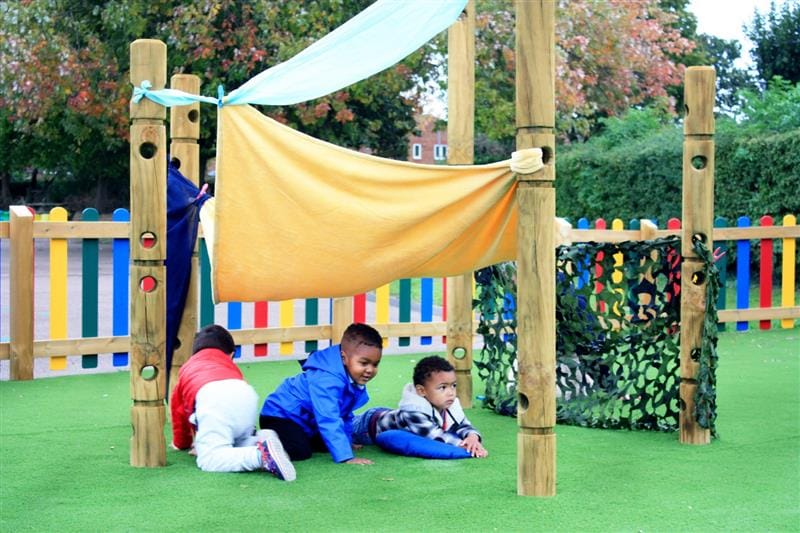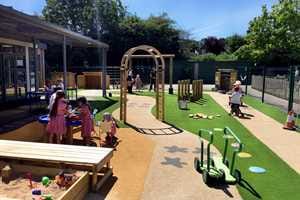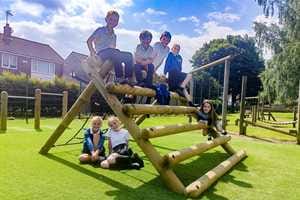
Lesson Ideas and Activities
6 Ways Schools Can Bring Forest School Principles to Their Playground
The popular Scandinavian idea of a ‘Forest School’ education seems to be growing in popularity in UK primary schools with more pupils donning their wellies and raincoats and setting off for adventures in the woodlands.
Forest School is a child- centred learning process that offers opportunities for holistic growth through regular sessions.
It is a long-term program that supports play, exploration and supported risk taking. It develops confidence and self- esteem through learner inspired hands on experiences in a natural setting
.
Forest School seems to offer an alternative to a formal, test-driven approach in primary schools.
Curiosity can guide learners across different areas of development rather than completing tasks set by the teacher using an explained method.
Children are connected to their natural environment and given freedom to explore, imagine and allowed time to appreciate the world around them.
What Are The Forest School Principles?
The first principle states that forest school should be a long-term process of regular sessions rather than one off or infrequent visits.
It is suggested that sessions should be two hours or longer and take place for 24 weeks or two terms of the school year so that two seasons can be experienced.
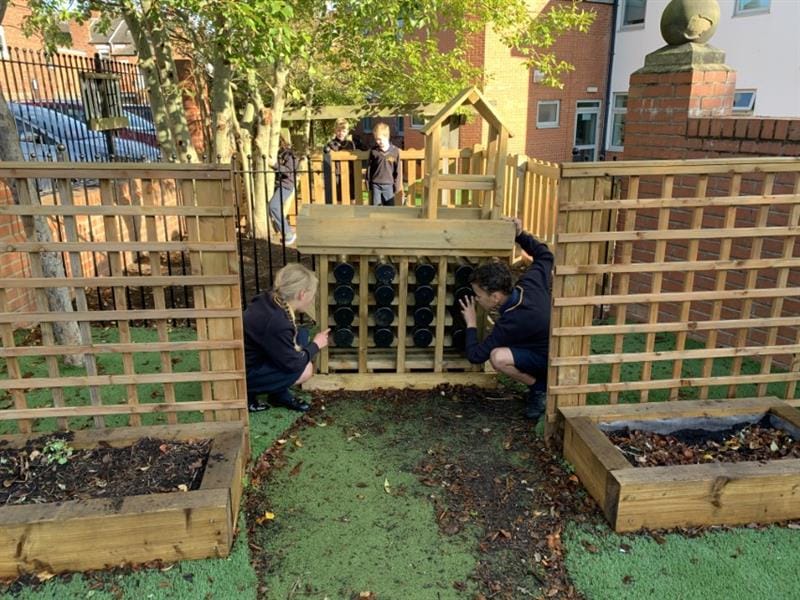
The second principle believes that forest school should take place in a woodland or natural environment to support the development of a lifelong relationship between the learner and the natural world.
Ideally, forest school sessions should take place in a woodland environment but not all schools have easy access to these types of areas if they are not situated in the countryside.
Schools may be able to visit these types of areas but it will involve costs, not all year groups may be invited to attend and not all seasons will be observed.
What should schools do if they want to adopt forest school principles as part of a long-term process and want to avoid one off sessions?
In this blog, I will explore ways of bringing forest school to any school. Whether you have access to a field, some trees, a neighbouring park or a school garden/planter.
I believe school playgrounds and local areas can be adapted to achieve some valuable elements of a forest school type of education.
Here are 6 ways you can bring forest school principles to your school playground.
Work as a team to build a den
My own children love building a den inside, usually all the cushions are pulled off the sofa and blankets create underground homes for animals and castles for the princesses.
Dens can be built easily in the school grounds or nearby park, pack your sheets and rope and off you go!
Dens can be constructed by tying a length of rope between two trees that are near to each other and draping a sheet over the top to create a tent.
Children can practise different knots beforehand and the corners of the tent can be held in place with rocks or large branches.
Den building is a great form of physical exercise for young adventurers. They are involved in collecting materials, carrying, stretching, reaching and tying a variety of different knots is brilliant fine motor work.
Children will be up for the challenge of making their own den by using three fallen branches to create a tripod shaped tent.
Mini tipis can be created using smaller sticks which can be used with toy figures and decorated by weaving ribbons and wool through the posts.
Problem solving skills will be developed as pupils figure out how to balance the branches to create the skeleton of their shelter.
Groups will need to communicate their ideas accurately to each other as they learn new skills and compromise. Working as a team will be rewarding as learners focus on the end goal.
Den Making Posts are a fantastic open-ended resource that allow various year groups to create their own dens at different heights.
Props can be used so that children are able to create their own open-air theatres.
Curtains can be created and decorated from old sheets, puppet and shadow shows performed, poetry recited and usually the most fun is had when children give impromptu performances to their friends.
This type of play encompasses the fourth principle of forest school to develop confident, independent and creative learners.
Marvellous Mud!
Forest school involves children in gathering readily available, natural materials and using these as a part of their play.
It is hoped that natural resources will inspire children, motivate them and provide them with ideas.
Mud is a much-loved material for most children. They enjoy making their own soups, teas, cakes and potions.

Having a mud kitchen in your setting provides many benefits, it can be a calming, relaxing space for pupils and mixing and measuring develops early mathematical concepts.
Some doctors believe that our sanitised world is contributing to increased levels of childhood allergies and an exposure to dirt and germs could be important to strengthen a child’s immune system.
Powdered paint or crushed-up chalk can be added to mud pies to add a colourful new dimension to creations.
To make a bubbling, magical potion you can mix one part baking powder with one part mud in a big shallow pan or bowl.
Muffin trays and old mugs can even be used to create cakes and drinks. Sprinkle powdered paint or chalk over the top of pies, in the desired pattern.
Vinegar will activate the bubbles! Just pour or squirt over a cup or so full and watch as the baking soda fizzes away to make a magical, frothing potion.
Ice cream cones and scoops can be used to make marvellous muddy treats and muddy pictures are often made by using sticks to make marks on pavements.
Fallen petals, leaves and herbs can be mixed together in the mud kitchen to fill perfume bottles and children can write and attach their own labels.
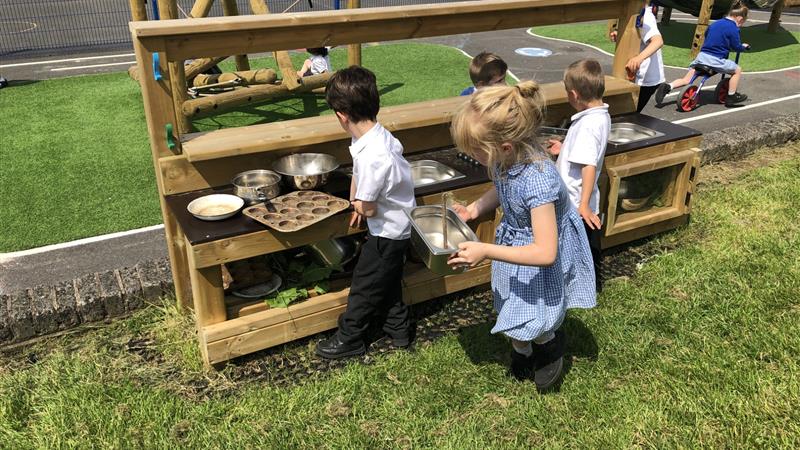
Observe water in nature
Playing in water outside can provide children with challenges and allows them to explore and discover.
In the wild, beavers build a dam to create a deep, still pool of water to make their lodge (home) and be safe from predators.

The dam slows the water so that their lodge doesn’t get washed away. They also store fresh branches under water as a tasty food source in winter.
You could ask the children to become beavers and build their own dam. They will need to find a site with a small flow of water after rainfall or Pentagon’s Damming Station would be the perfect base.

Children can use natural materials that they find around them such as mud, sticks and stones to try to control the movement of the water.
Can pupils slow the water down or stop it completely to form a pool? Perhaps they will manage to change the direction of the water flow.
Nature boats can be made easily using foraged materials.
A base for children’s boats can be made from flat bark, light wood, a seed pod or a bundle of sticks. Big leaves or feathers make wonderful sails which can be attached to the base using a stick and a glue gun.
A running creak would be perfect for a boat race but Pentagon’s Water Table or a puddle make equally great spots.
Straws can be used to blow wind into the sails of the boats to propel them along.
These types of learning opportunities allow children to experience success and build relationships with others.
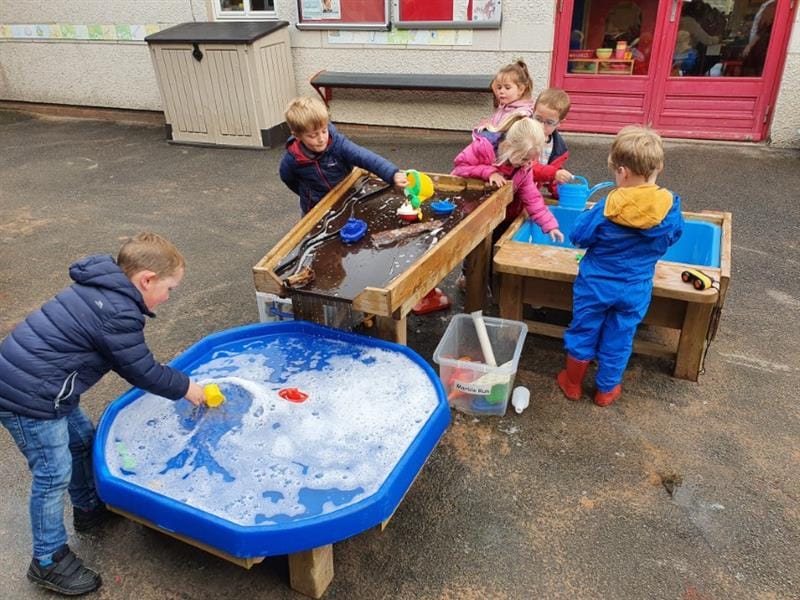
Outdoor Games
When given time to explore the natural environment children will often work together to develop their own games, whether imaginative or educational.
Through careful observation facilitators can guide children in creating outdoor games using natural materials.
Good old- fashioned games such as noughts and crosses can be made using sticks to create a criss-cross grid and two different sets of items such as small leaves and stones can be collected.
The aim of the game is to get three matching items in a row whether horizontally, vertically or diagonally and try to block the other player in the process.
Product Spotlight
Items can be returned to the natural environment once children have finished playing.
Caring for the natural world is an integral part of forest school philosophy.
Using the same grid children can work on their number skills.
A magic number square is a grid in which every row, column and diagonal adds up to the same number (the magic number).
It is a way for children to problem solve using trial and error strategies, consolidating work on number bonds and working as a team.
Challenge children to create a magic number square in which each row, column and diagonal of the grid will add up to 15.
Collect 45 individual loose tokens and arrange them so that the numbers 1-9 appear only once in the grid.
There are so many opportunities to explore numbers in nature.
Large, class graphs can be created by using tape on the playground floor to create a grid and asking children to find leaves of different colours.
Number board targets can be drawn on the floor using chalk and for example children can toss two natural items to find numbers bonds to 20.
Take a moment to be still, calm and observe
Having an outdoor classroom can provide the ideal spot for children to take a moment to be still, calm and simply observe their surroundings.
In my experience children can find it difficult to just stop and really listen and observe using all of their senses.

Doing this type of activity for ten minutes each week or even once a month can help children to spot changes that occur between seasons or even at different times of day.
Encourage children to take in sights, smells and sounds. Can they hear birdsong or people? Can they see trees? Are they moving? What colours do they notice?
Children may be able to close their eyes or cup their ears with their hands to see if they can hear further away.
Forest school strategies help children to build a relationship with nature through their own personal experience.
Children may begin to understand environmental issues and promote sustainability.
A hanging bird feeder would be a wonderful addition to attach to an outdoor classroom.
These types of activities allow children to care for nature and also to learn more about local wildlife.
Birds really appreciate being fed in winter and early spring when food is scarce.
Pieces of apple, raisins and monkey nuts can be threaded on to garden string or peanut butter and birdseed can be added to an empty citrus fruit halve.
These types of feeders are mostly biodegradable so children know that they won’t damage the environment.

Taking risks with tool play
Tool play is important for children and develops key skills and abilities.
Using tools allows children to manage risks and provides them with a sense of achievement. Potato peelers can be used to whittle sticks usually with a 1:1 or 1:2 staff to children ratio.
The stick could become a wand, a bow or a wizard’s staff. Beautiful outdoor mobiles can be made by drilling holes in wood slices using a hand drill.
Having a designated seating area using Perch Benches can provide a useful base for these types of activities and circular seating adds to the feeling of class community and teamwork.
Many schools are now starting to see the benefits of teaching within the great outdoors, whatever the weather.
I hope schools continue to apply forest school principles that cater to their individual needs.
Our young people can connect with nature and learn to respect it; schools just need to work with the environment around them.
Our children deserve child-centred free play and as much as we can plan and provide starting points for sessions the real wonder of outdoor learning comes from children taking their own routes and directing their own learning.
Certain pupils who can be quiet and withdrawn in a classroom environment may come alive in forest school sessions.
Concentration spans may increase and children will want to talk about and share their experiences.
Those who don’t always excel in the classroom might be the best at making dens and their confidence will soar.
Children are not always interested in finding the answers to word problems or calculations but it can be very different outside when trying to cross a muddy bog by making a path from sticks, logs and stones!
Forest school principles give children time to explore nature and can also link with areas of the curriculum.
There are always new things to see and new experiences to be had at forest school.
Let’s embrace and embed them within our daily practise.

